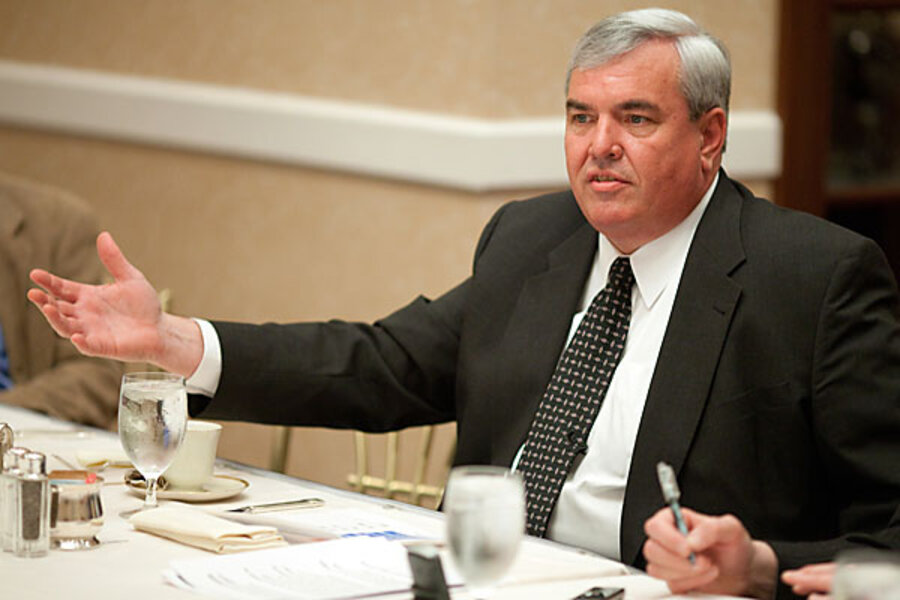Postmaster General: focus on customers, not struggling downtowns
Loading...
| Washington
As e-mail and electronic billpaying reduce the volume of mail nationwide, the Postal Service can't maintain post offices just to prop up struggling downtown areas, says Postmaster General John Potter.
At a Monitor-sponsored breakfast with reporters on Thursday, Mr. Potter acknowledged the Web's role. “The tipping point is that the Internet is really starting to erode our mail base and if we stay status quo … we will have nothing but, you know, future losses.”
Last week Mr. Potter released a comprehensive plan for how the Postal Service could deal with what he estimated could be $238 billion in cumulative losses by 2020. The service is being squeezed by sliding sales of first class postage, and costs continue to rise as the number of addresses to which the service must deliver increases.
Potter is seeking Congressional permission to make a series of changes including eliminating Saturday delivery, making more flexible use of a smaller Postal Service workforce, gaining more freedom to price products, and changing the way it covers the cost of employee retirement benefits.
Perhaps no proposed solution to the Postal Service’s financial woes is more politically difficult than what Potter calls "expanding access." By that he means providing more postal services at grocery stores, pharmacies, and office supply stores while closing some of the 26,000 money-losing post offices among the 32,000 the service operates.
“I am not an advocate of just closing a post office," Potter said. "People need to have access to postal services. But think about it. Does that access have to come in a facility that we have today," where on average 600 people walk in during a week, he asked. The average post office foot traffic of 600 people per week compares to 10,000 per week at the average pharmacy, and 20,000 at the average grocery store.
“So I would just as soon have our products and services where people are and where the traffic is than ... in a location that in some cases is out of the way," Potter said. "And it doesn’t have to be a postal clerk that sells them – it could be anyone.”
And in language that may be hard for officials in struggling communities to hear, Potter added, “We don’t want to be the anchor for the revitalization of some downtown area that is pretty much vacant because some big strip malls have been built up outside of the downtown area. We need to be where the people are.”





